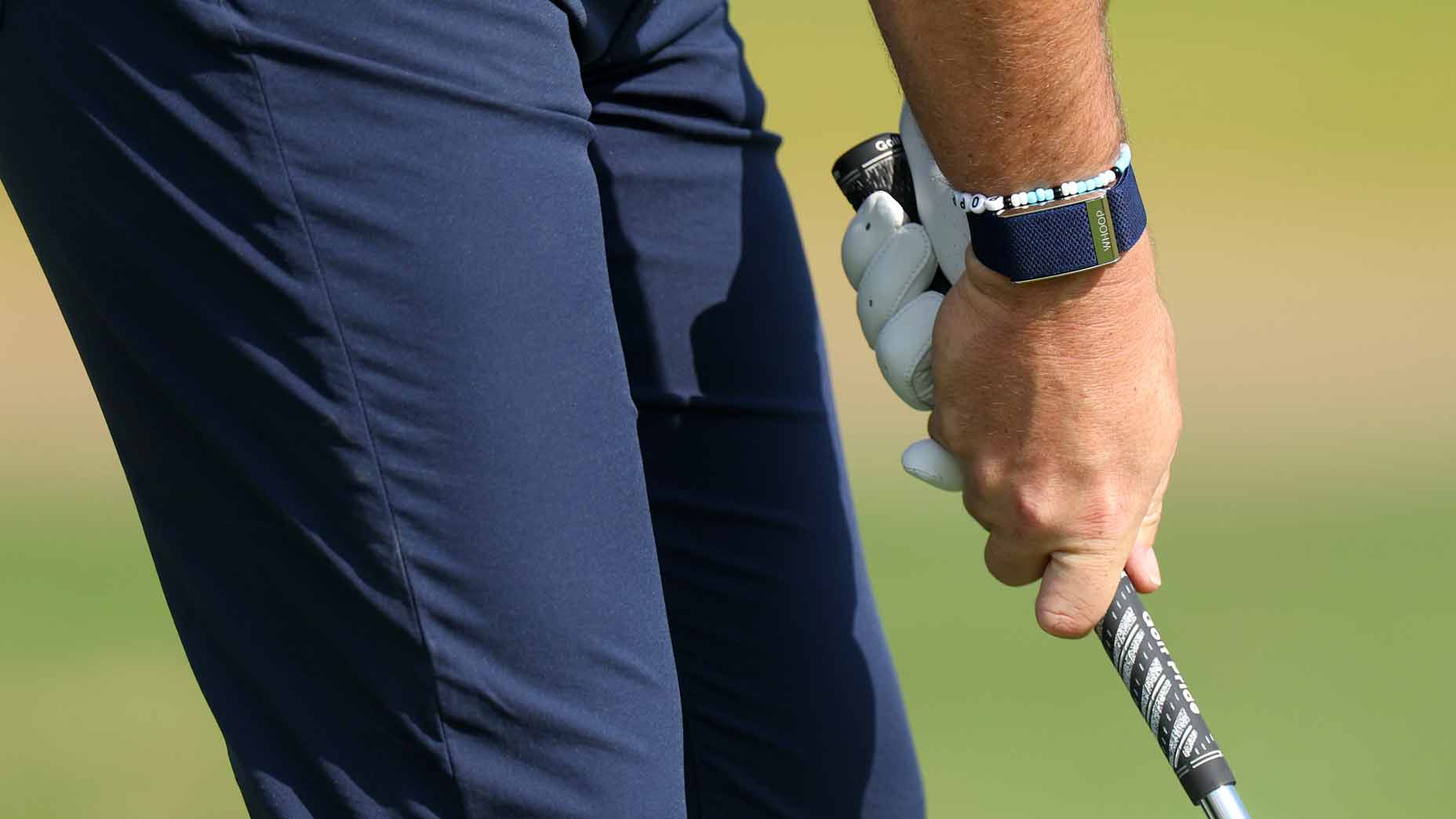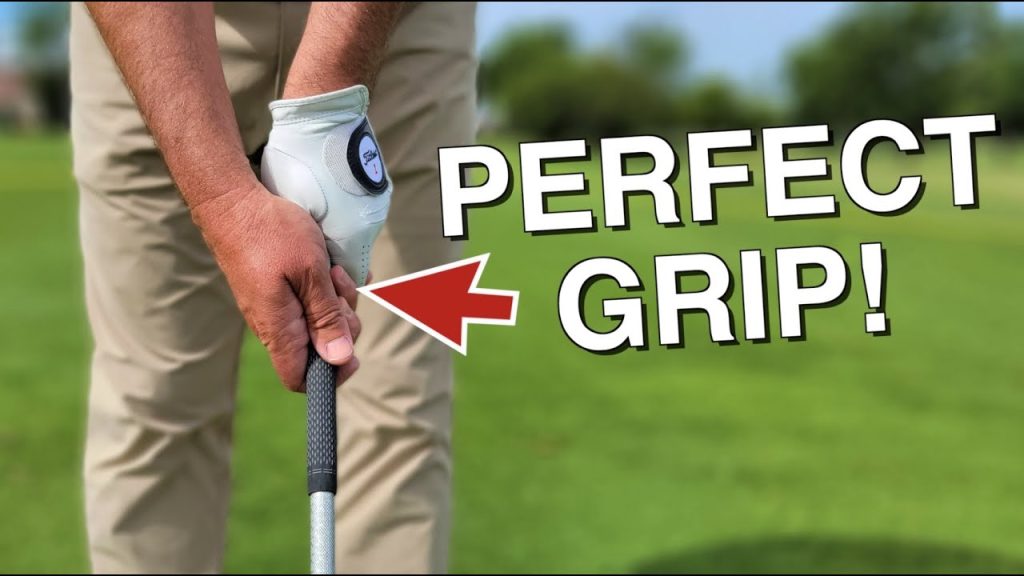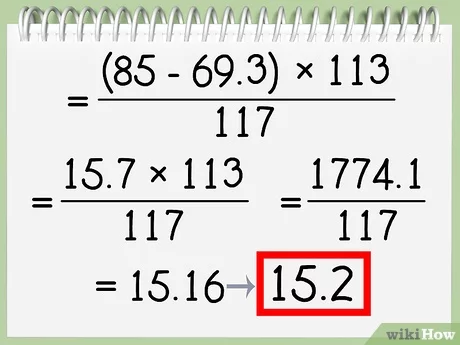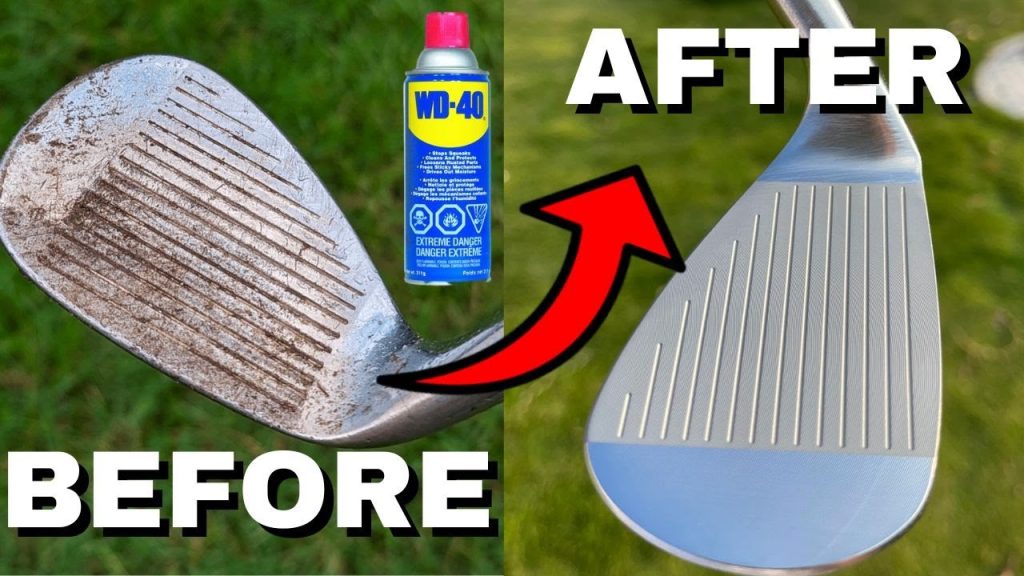Holding a golf club correctly is essential for good performance. A proper grip can significantly improve your swing and accuracy.
In golf, the grip is the foundation of a successful game. Without it, even the best swing techniques may fail. Many beginners struggle with this basic yet crucial aspect. Understanding how to grip a golf club can transform your overall play.
This guide will walk you through the steps to achieve a firm and comfortable grip. Whether you are just starting or looking to refine your skills, these tips will help you hold the club like a pro. Let’s dive into the details and elevate your golfing experience!
Introduction To Golf Grip
Golf is a game of precision. One fundamental aspect is the grip. It is often overlooked but crucial for success. A proper grip can improve your swing and control. Let’s explore the basics.
Importance Of Proper Grip
A proper grip sets the foundation for your swing. It affects the clubface angle. This impacts the ball’s direction and distance. A good grip ensures consistency in your shots. It helps in maintaining balance and control. Without a proper grip, your swing can become erratic.
Common Mistakes
Many golfers hold the club too tightly. This creates tension in the hands and arms. Tension can lead to poor swings. Another common mistake is improper thumb placement. Thumbs should rest lightly on the club. Some golfers place their hands too far apart. This reduces control and power.
Remember, practice makes perfect. Pay attention to your grip. It can make a significant difference in your game.
Types Of Golf Grips
Understanding the different types of golf grips can improve your swing. Each grip has unique features. Let’s explore the Vardon, Interlocking, and Baseball grips.
Vardon Grip
The Vardon grip is the most popular grip in golf. Named after Harry Vardon, it is used by many professional golfers.
- Place the pinky finger of your trailing hand between the index and middle fingers of the lead hand.
- Ensure a secure hold without straining your hands.
This grip offers control and power. Perfect for most players.
Interlocking Grip
The Interlocking grip is a favorite among players with smaller hands. Tiger Woods and Jack Nicklaus use this grip.
- Interlock the pinky finger of your trailing hand with the index finger of your lead hand.
- Maintain a firm but comfortable grip.
This grip provides a strong connection between your hands. Ideal for precision.
Baseball Grip
The Baseball grip, also known as the 10-finger grip, is simpler and more natural. Great for beginners.
- Place all ten fingers on the club, just like holding a baseball bat.
- Ensure equal pressure from both hands.
This grip offers flexibility and ease of use. Best for new golfers.
Choosing The Right Grip
Choosing the right grip for your golf club is crucial. It influences your swing, accuracy, and overall game. Understanding how to select the right grip helps you play better and enjoy the game more.
Hand Size Considerations
Your hand size plays a vital role in choosing a golf grip. A grip too large or too small impacts control and comfort. Here’s a simple guide to help:
- Measure the length from the wrist to the tip of your middle finger.
- Small hands (under 7 inches) need a thinner grip.
- Medium hands (7-9 inches) require a standard grip.
- Large hands (over 9 inches) benefit from a thicker grip.
Use these measurements to find the right grip size. Grip size affects the way you hold and control the club.
Personal Comfort
Personal comfort is essential for an effective golf grip. A comfortable grip makes your swing more natural.
- Try different grips: Experiment with various textures and materials.
- Feel the grip: Hold the grip and sense how it fits in your hand.
- Check your grip pressure: Ensure it’s firm but not too tight.
Comfort impacts your confidence and performance. Trust your instincts when selecting a grip. Feeling at ease with your grip leads to better swings.

Credit: www.performforgolf.com
Step-by-step Grip Guide
Getting the right grip on your golf club is crucial. It affects your swing, control, and overall performance. This step-by-step guide will help you understand how to grip a golf club correctly. Follow these simple steps to improve your game.
Left Hand Placement
Start by holding the club in front of you. Let the clubhead rest on the ground. Place your left hand on the grip. The club should lie across the base of your fingers. The heel pad of your hand should sit on top of the grip. Your thumb should point down the shaft. Ensure the “V” shape formed by your thumb and index finger points to your right shoulder.
Check your knuckles. You should see two or three knuckles of your left hand. This ensures a strong hold. Avoid gripping too tight. A firm but relaxed grip is best.
Right Hand Placement
Bring your right hand to the club. Place the club in the base of your fingers. Cover your left thumb with your right palm. The “V” shape created by your right thumb and index finger should point to your chin or slightly right of it.
Ensure both hands work together. The grip should feel natural and comfortable. Avoid tension in your hands and arms. This will help you swing more freely.
Adjusting Grip Pressure
Adjusting your grip pressure is crucial for improving your golf game. Too tight or too loose a grip can significantly impact your swing. Understanding the right grip pressure can make a big difference.
Firm Vs. Light Grip
A firm grip means holding the club tightly. It provides a sense of control but can lead to tension. This tension can restrict your swing and reduce distance.
A light grip, on the other hand, means holding the club gently. It promotes flexibility and ease in your swing. This can help increase distance and improve accuracy.
| Grip Type | Benefits | Drawbacks |
|---|---|---|
| Firm Grip | Control, Stability | Tension, Reduced Distance |
| Light Grip | Flexibility, Increased Distance | Less Control |
Effects On Swing
Grip pressure affects your swing’s tempo and path. A firm grip can lead to a rigid swing, causing slices or hooks. This happens because the tension limits your wrist action.
A lighter grip encourages a smoother swing. It allows your wrists to move freely, which can result in a straighter shot. This helps maintain a consistent swing path and better ball contact.
Adjusting your grip pressure might require some practice. Start by gripping the club lightly and gradually increase pressure until it feels comfortable yet flexible.
Remember, the goal is to find a balance. Your grip should be firm enough to control the club but light enough to maintain flexibility. Experiment with different pressures to find what works best for you.
- Begin with a light grip.
- Gradually increase pressure.
- Find a balance between control and flexibility.
Finding the right grip pressure can improve your golf swing and overall game. Keep practicing and adjust as needed.
Common Grip Issues
Common grip issues can greatly affect your golf performance. Many golfers struggle with either gripping the club too tightly or too loosely. Both can have a negative impact on your swing and overall game. Here, we’ll explore two of the most common grip problems: grip too tight and grip too loose.
Grip Too Tight
Gripping the club too tightly is a common problem. A tight grip can lead to tension in your arms and shoulders. This tension can restrict your swing and reduce your power. Here are some signs you might be gripping the club too tightly:
- Your knuckles turn white.
- You feel tension in your forearms.
- Your shots lack distance.
To fix this, try to hold the club like you would a small bird. Firm enough that it won’t fly away, but gentle enough not to hurt it. This will help you maintain a relaxed and controlled swing.
Grip Too Loose
On the other hand, a grip that is too loose can also be problematic. A loose grip can cause the club to twist during your swing. This can lead to inaccurate shots and inconsistent contact with the ball. Here are some signs your grip might be too loose:
- The club moves in your hands during your swing.
- Your shots tend to slice or hook.
- You struggle to control the direction of your shots.
To correct a loose grip, focus on applying consistent pressure throughout the swing. Your grip should be firm, but not overly tight. Imagine holding a tube of toothpaste without squeezing any out. This balance will help you maintain control and improve your shot accuracy.
Practicing Your Grip
Practicing your grip is crucial for improving your golf game. A good grip can enhance your control and accuracy. Here, we will discuss drills and exercises to help you practice. We will also share tips to ensure consistency. Let’s get started!
Drills And Exercises
Regular practice with specific drills can help perfect your grip. Here are some effective exercises:
- Grip Pressure Drill: Hold the club with a light grip. Gradually increase pressure until you find a comfortable, firm grip.
- Alignment Drill: Place a tee in the ground. Align your hands on the club, ensuring both thumbs point towards the tee.
- Mirror Check: Stand in front of a mirror. Check your grip from different angles. Ensure your hands are in the correct position.
- One-Handed Swings: Practice swinging with one hand. Alternate between left and right hands. This helps strengthen your grip.
Consistency Tips
Consistency is key in maintaining a good grip. Here are some tips to help you stay consistent:
- Routine: Develop a pre-shot routine. Include grip checks in your routine.
- Markers: Use markers on your club. This helps you align your hands correctly every time.
- Practice: Practice your grip daily. Even a few minutes can make a difference.
- Feedback: Get feedback from a coach or a friend. This helps identify and correct any mistakes.
Remember, a consistent grip can significantly improve your performance. Practice these drills and follow these tips to achieve a better grip.
Grip Maintenance
Proper grip maintenance is essential for any golfer. A well-maintained grip ensures better control and comfort. This section will cover how to inspect your clubs and replace worn grips.
Inspecting Your Clubs
Regularly check your golf club grips for wear and tear. Look for cracks, smooth spots, and areas where the texture has faded. These signs indicate that the grip may need replacing.
Feel the grip with your hands. If it feels hard or slick, it’s time for a change. A good grip should feel tacky and provide a secure hold. Conduct this inspection every few rounds to maintain optimal performance.
Replacing Worn Grips
Replace worn grips to keep your clubs in top condition. Start by removing the old grip with a utility knife. Be careful not to damage the shaft.
Next, clean the shaft thoroughly to remove any residue. Apply double-sided grip tape to the shaft. Leave a small overhang at the end.
Apply grip solvent to the tape and the inside of the new grip. This will make it easier to slide the grip onto the shaft. Once in place, let it dry for a few hours before use.
Regular maintenance of your golf club grips can improve your game. It ensures a reliable and comfortable grip every time you play.
Conclusion And Next Steps
Mastering how to grip a golf club is essential for improving your swing. You have learned the basic techniques and tips to get started. Now, it is time to put these lessons into practice and continue your journey in golf.
Recap Key Points
Remember to hold the club in your fingers, not your palms. Keep your grip firm but relaxed. Ensure your hands work together, with the V shapes pointing between your chin and right shoulder. Practice these steps regularly to build muscle memory.
Continued Learning
Keep practicing on the driving range to hone your skills. Watch golf tutorials and attend workshops to learn advanced techniques. Join a local golf club to get feedback from experienced players. Consider taking lessons from a professional coach for personalized guidance.
Stay patient and enjoy the process. Improvement takes time, but with dedication, you will see progress. Keep your focus on the basics and gradually build your skills. Happy golfing!

Credit: www.youtube.com

Credit: golf.com
Frequently Asked Questions
What Is The Correct Way To Hold A Golf Club?
To hold a golf club correctly, place your left hand on the club first. Ensure your thumb points down. Then, position your right hand over the left thumb. This grip offers control and stability.
How Tight Should You Grip A Golf Club?
Your grip should be firm but not too tight. Holding the club too tightly can restrict your swing. Aim for a grip pressure similar to holding a tube of toothpaste without squeezing out the paste.
What Are The Different Golf Grips?
There are three main golf grips: the Vardon grip, the interlocking grip, and the baseball grip. Each offers unique benefits. Choose the one that feels most comfortable and provides the best control for you.
How Does Grip Affect A Golf Swing?
Your grip significantly affects your swing’s direction and power. A proper grip ensures better accuracy and distance. Incorrect grips can lead to slices or hooks. Adjusting your grip can improve your overall performance.
Conclusion
Mastering your golf grip improves your game significantly. Practice consistently for best results. Remember, a good grip enhances control. Adjust your grip for comfort and accuracy. Each golfer has a unique style. Find what works best for you. Keep your hands relaxed yet firm.
Proper grip reduces tension and improves your swing. Stay patient. Improvement takes time. Enjoy the process and have fun. Happy golfing!



